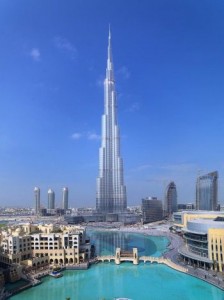By Monika Halan www.livemint.com
Almost at the time I was risking my neck, pushing it to the limit, trying to get the entire 508m of Taipei 101, the world’s second tallest building, into the camera frame, my home city (New Delhi) got its tallest building.

The 112m, 28-storey Dr Shyama Prasad Mukherjee Civic Centre, headquarters of the Municipal Corporation of Delhi, is now the tallest building that the 73m Qutub Minar-benchmarked Delhiites can now look up to. Built at a cost of Rs650 crore, the centre was inaugurated on 22 April.
Of course, Mumbai has the 249m Imperial Towers I and II, near completion, and with scores of buildings that top out well over 112m, this is nothing to write columns about.
Tall buildings, as I discovered in Taipei, are just as important for nations and cities as the next cellphone model or the sports utility vehicle is for their upwardly mobile citizens. And having the tallest building or a tall building in the top 10 is another way that a nation makes a statement.
Taking over where victory towers left off and in a world that was awed by the American statement of conquering nature with its skyscrapers, to construct the world’s tallest building has become a way of declaring “I am” for a nation—the most perceptible way of showcasing the domestic growth story. Much better than what the dull per capita income number will ever mean to somebody who lives across the world.
For Taipei, which struggles to get recognition as a nation (that it lost when its United Nations seat went to the People’s Republic of China in 1971 and most countries, including India, switched diplomatic relations to China) having the tallest building in the world (before Dubai took the mantle) was a way of getting noticed. Conversations and attitudes around Taipei 101 tell you that this is more than just a tall building for the Taiwanese.
It is a statement. If for Taiwan, Taipei 101 was its cry of “I am the real China”, for Dubai, the 828m Burj Dubai was a way of reinforcing the image that the city-state wanted to project—of a modern, global financial centre that would give New York and London a run for their money in becoming a financial entrepot. As did Malaysia in 1992, when the twin 451.9m Petronas Towers I and II were commissioned—it was the fitting next step to celebrate the victory of the Asian Tigers over poverty and decades of stagnation.
But what is equally clear from looking over the history of tall building projects is the link between the inauguration of a “tallest building in the world” project and impending economic doom. By the time Kuala Lumpur was ready to cut the red ribbon on the twin towers in 1998, the Asian crisis had hit home a year earlier. In 2004, Dubai could dream of towering over the world, but by January 2010, the towers were renamed Burj Khalifa from Burj Dubai, to publicly acknowledge the role of the President of the United Arab Emirates in saving the city-state from a financial default in November 2009.
Tall building projects typically are signed off in times of cheap money, a heating-up economy and an impending real estate bubble. China is in the middle of a property bubble and has one-third of the world’s tallest 100 buildings. So when I read the headlines about New Delhi’s tallest building, I looked around to see where we stand in the global pecking order of skyscrapers only to find that we don’t really scrape the sky so well
Mumbai, even with its twin towers, does not figure in the global top 100 listing of tall buildings. Its tallest today is still shorter than the 260m 100th tallest Bahrain-based building, Dual Towers I and II. If skyscrapers were an index of success, wealth and power, then a trend is certainly visible. The balance of power is shifting to the East. Seven of the top 10 tallest buildings are in Asia—four in China, two in Malaysia, one in Taiwan. Just two are in the US, one of which is a 1974 building.
But it does not look as if India or Indians are unduly worried about failing on another parameter of global ranking. The lack of interest or even public debate on getting India on the tall building map could mean several things. One, we are not at the stage of economic growth where having the tallest building becomes something to think about.
Two, there is no massive speculative real estate bubble in the country and cheap money is certainly not an issue. Three, the argumentative Indian does not need the prop of an icon of American culture to define India’s identity or its place in the world. Or it could just be that we are so sure that a fire in the tallest building will end in disaster with the fire engines (that can reach all of 10 storeys) stuck in a traffic jam caused by a broken-down cycle on the main road. Nope, we don’t even want to go that way.
Monika Halan works in the area of financial literacy and financial intermediation policy and is a certified financial planner. She is consulting editor with Mint and can be reached at expenseaccount@livemint.com














